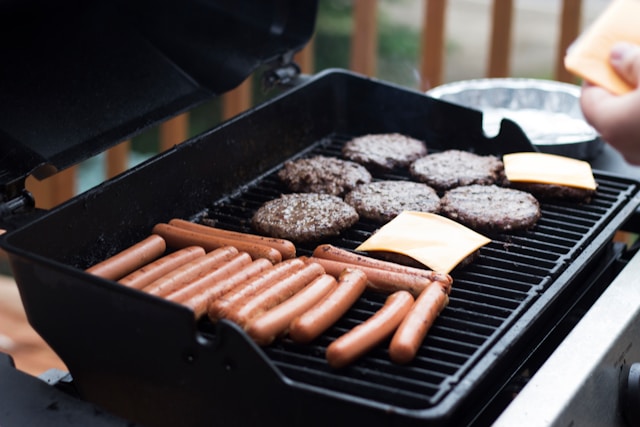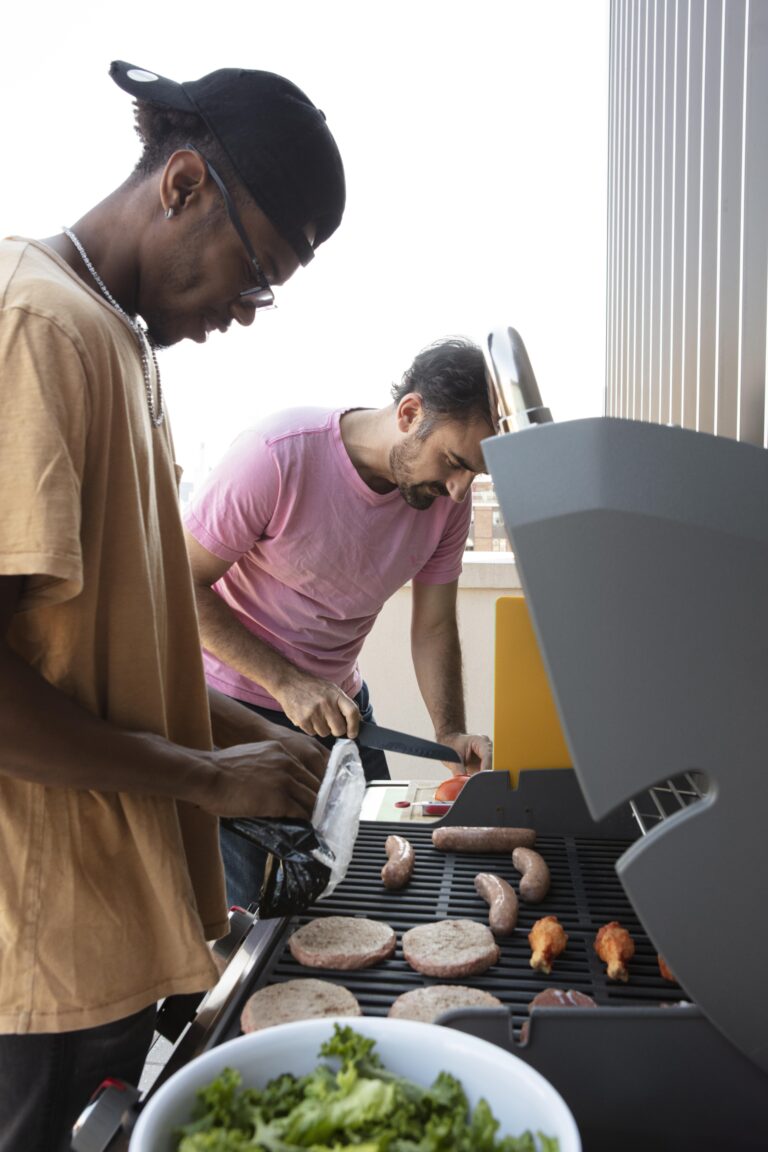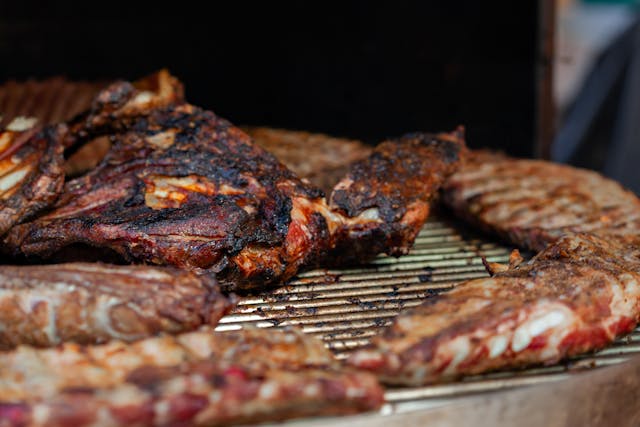Offset smoker fire management tips
Cooking with an offset smoker is a time-honored tradition among barbecue enthusiasts. Unlike electric or gas smokers, offset smokers rely on a separate firebox to generate heat and smoke, creating a unique flavor profile that is hard to replicate. However, managing the fire in an offset smoker can be challenging, especially for beginners. Understanding how to build and maintain a consistent fire is crucial for achieving delicious smoked meats that are tender, juicy, and full of flavor. Fire management in an offset smoker involves controlling various factors such as airflow, fuel type, and temperature. Mastering these elements allows you to maintain steady cooking temperatures while preventing flare-ups and uneven cooking. This guide will provide you with essential tips and techniques for managing fire effectively in an offset smoker, ensuring you get the best results from your barbecue endeavors. Whether you’re preparing a succulent brisket for a special occasion or experimenting with different meats for your next cookout, mastering fire management is vital. This article will cover practical strategies and best practices to help you become a proficient pitmaster and elevate your smoking game.

1. Understanding the Offset Smoker Design
Offset smokers are designed with a firebox that sits off to the side of the main cooking chamber. This design allows for indirect heat cooking, where the heat and smoke from the firebox circulate through the cooking chamber, imparting flavor to the meat while minimizing the risk of burning.
The firebox should be well-ventilated to provide adequate airflow, while the cooking chamber needs to retain heat for even cooking. Knowing how heat flows through your smoker is essential for efficient fire management. The side nearest the firebox will be hotter, while the opposite side will be cooler, allowing for versatile cooking options.
2. Choosing the Right Fuel
The type of fuel you use can significantly impact your fire management and the flavor of your food. In offset smokers, wood and charcoal are the most commonly used fuels. Provides rich, smoky flavors but can be unpredictable in terms of heat output. Use hardwoods like oak, hickory, or mesquite for best results. Offers a more stable heat source and is easier to manage. Many pitmasters use a combination of charcoal for consistent heat and wood for flavor.
3. Building a Solid Fire
Building the right fire is crucial for effective temperature control. Start by using a chimney starter to light a small amount of charcoal, then transfer it to the firebox. Once the charcoal is glowing, add wood chunks gradually to build heat. Ensure the wood is dry to produce clean smoke. Keep the fire manageable by adding small amounts of fuel regularly. Avoid overcrowding the firebox, which can lead to temperature spikes.
4. Controlling Airflow with Dampers
Airflow is a critical component of fire management in offset smokers. The intake and exhaust dampers allow you to regulate the amount of oxygen that feeds the fire, impacting the heat and smoke levels. Opening the intake damper increases oxygen flow, which raises the temperature. Adjust it carefully to avoid overheating the smoker. The exhaust damper controls smoke release. Keeping it open allows for better airflow, preventing creosote buildup and ensuring a clean smoke flavor.
5. Using a Water Pan for Temperature Stability
Inserting a water pan into your smoker can help stabilize the temperature and add moisture to the cooking environment. This technique is particularly useful for long smoking sessions. The water absorbs heat, preventing sudden temperature spikes and helping to maintain a consistent cooking temperature. Position the water pan between the firebox and the cooking chamber for optimal heat diffusion.
6. Managing the Fire During Cooking
Maintaining a steady fire throughout the cooking process is essential for consistent results. Keep an eye on the temperature and be prepared to make adjustments as needed. Use a reliable thermometer to keep track of both the cooking chamber temperature and the internal temperature of the meat. Depending on the length of your cook, you may need to add fuel every 30 to 60 minutes. Always add fuel slowly to maintain temperature control.
7. Dealing with Weather Conditions
Weather can significantly affect your ability to manage heat in an offset smoker. Factors like wind, rain, and cold temperatures can all impact cooking performance. Use a windbreak to shield the smoker and adjust your dampers to control airflow effectively. Insulate the smoker or add extra fuel to maintain heat. A welding blanket can be useful for insulating the smoker during colder months.
8. Utilizing a Heat Deflector
A heat deflector is a useful tool that can help you manage temperature more effectively in an offset smoker. It acts as a barrier between the firebox and the cooking chamber, allowing for more even heat distribution. The deflector absorbs and radiates heat more evenly throughout the cooking chamber, reducing hot spots that can lead to uneven cooking. If your smoker doesn’t have a built-in heat deflector, you can create one using a metal tray or sheet, which can help manage direct heat exposure to your meat.
9. Maintaining Proper Cleanliness
Keeping your offset smoker clean is essential for effective fire management. A buildup of grease and ash can obstruct airflow and lead to temperature fluctuations. After each cook, take the time to clean out ash from the firebox and the cooking chamber. A clean smoker not only functions better but also produces cleaner smoke flavor. Regularly check and clean the chimney and exhaust vents to prevent creosote buildup, which can affect the taste of your food.
10. Experimenting with Fuel Combinations
Using different combinations of fuel can lead to more flavorful and consistent results. Many pitmasters experiment with various types of wood and charcoal to find the best flavor profiles for their cooking style. For example, hickory provides a strong, bacon-like flavor, while fruit woods like apple or cherry offer milder, sweeter notes. Combine hardwoods with charcoal for a balanced heat source. Start with charcoal as the base, then add your preferred wood for smoking.
11. Understanding the Maillard Reaction
The Maillard reaction is a crucial process that occurs when proteins and sugars in meat react to heat, resulting in the delicious crust and flavors we associate with perfectly smoked meats. Achieving the right cooking temperature is vital for triggering this reaction. It generally occurs between 300°F and 500°F. Utilize the hot side of your smoker to sear meats initially before moving them to the cooler side to finish cooking. This technique helps develop a rich crust while keeping the interior moist.
12. Using Thermometers Effectively
Investing in quality thermometers can significantly improve your fire management. Having accurate temperature readings allows you to make informed decisions about fuel and airflow adjustments. Use both a digital meat thermometer for internal meat temperature and a reliable smoker thermometer to monitor cooking chamber temperatures. Position your smoker thermometer at grate level to get an accurate reading of the temperature where your food is cooking.
Freequently Asked Questions
2. Can I use propane as fuel in an offset smoker?
The majority of offset smokers are made to burn charcoal and wood. On the other hand, some pitmasters light the charcoal with propane. If you decide to go this way, be sure your smoker is propane compatible.
3. What should I do if my smoker is too hot?
Reduce airflow by partially closing the intake damper if your smoker is operating too hot. To reduce the temperature, you may also take some of the charcoal or burning wood away. Give the smoker some time to settle in before adjusting it more.
4. How do I know when to add more fuel?
Keep a careful eye on the temperature. It's time to add extra gasoline if the temperature drops. Rather than waiting until the fire is low, which might result in greater variations in heat, try to add modest quantities on a regular basis.
Conclusion
Effective fire management is essential for achieving great results with an offset smoker. By understanding your smoker’s design, choosing the right fuel, and mastering airflow control, you can maintain a steady cooking temperature and produce delicious, smoky meats. Incorporating techniques like using a water pan and adapting to weather conditions can further enhance your smoking experience. Ultimately, the key to becoming a skilled pitmaster lies in continuous practice and experimentation. Each cook provides an opportunity to learn and refine your techniques. With the knowledge gained from this guide, you’ll be well-equipped to manage your offset smoker’s fire and enjoy flavorful barbecue that impresses family and friends. As you embark on your smoking journey, remember that patience and attention to detail are your best allies. With time, you’ll develop the confidence and expertise needed to master your offset smoker, ensuring each cook yields tender, smoky perfection every time.







